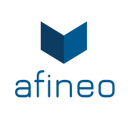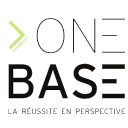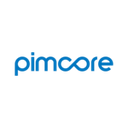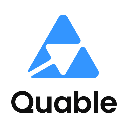Which PIM solution is best for managing product information?
Are you looking for a comparison to find your PIM solution? Ideally, it should also include DAM functionalities?
Whatever your company or business, this selection of product data management solutions will help you make an informed choice and see the benefits of such a tool for your project.
Reminder: what are the differences between PIM, DAM and MDM?
- PIM, an acronym for Product Information Management, translates into French as Gestion de l'Information Produit (GIP).
- DAM stands for Digital Asset Management.
- MDM, for Master Data Management, is the management of reference data, its classification and prioritisation according to its degree of importance, for better exploitation.
3 good reasons to use a PIM solution combined with a DAM
Fluid management of product information, enriched and supplemented by media, is very powerful. Here are three examples.
1. Create an exceptional customer experience (CX)
Many web users are disappointed after an online purchase because of the difference between the product they expected and the product they received.
22% of products returned by consumers are because they don't look like their photo on the site. 23% of returns are because the wrong product was sent.
Aument
The PIM makes it possible to completely eliminate this risk by updating all media with up-to-date information on the latest changes (including photos thanks to the DAM), and also by offering new products more quickly thanks to the centralisation of its product data management.
Office DEPOT, for example, has reduced its time-to-market for new products by 60% and has considerably reduced its inventory errors.
2. Perfecting and standardising your omnichannel strategy
The context of a company selling or distributing goods is as follows:
- it has a wide range of products;
- the characteristics of the products change frequently;
- the IT infrastructure is not uniform (resulting from a combination of solutions);
- it sells its goods both in shops and online.
In this context, it is not possible to distribute its services and products uniformly across all channels (shop, mobile application, marketplaces, e-commerce site, etc.).
The PIM makes it possible to standardise information and redistribute it cleanly. The PIM-DAM then becomes the information centralisation point that is essential in an omnichannel strategy.
A sale on a Magento site with an in-store collection option, for example, must immediately be taken into account in the stock count for the shop in question.
3. Enormous gains in information processing
A PIM solution combined with a DAM can centralise 100% of product information.
As a result, fewer staff will be working on data processing, freeing up resources that can then be allocated to revenue-generating activities.
In addition, the people who work on the data have tools at their disposal that can drastically improve their productivity:
- automatic calculation rules on certain attributes to convert a value into another unit (26 inches converted into 66 cm, for example);
- Batch modification of products by applying rules to change the terms 'grey', 'metallic' and 'silver' to 'space grey', for example;
- execution of data modification workflows, and fine-grained management of rights right down to the product attribute, to make data processing more accountable.
The DAM enables digital assets to be secured, but also and above all to be searched, classified, annotated and shared internally or with partners.
7 solutions combining PIM, DAM and more...
1. Afineo
Afineo, a PIM pioneer created in 2004, is a French business-oriented PIM, DAM, MDM and Publishing solution. Its ergonomics, modularity and integrated functionalities make it an easy-to-use and powerful tool. It can be deployed very quickly and inexpensively.
Afineo key features and functionalities :
- Multi-domain and multi-repository (product files from several brands and/or several suppliers),
- Possibility of creating one or more DAMs to create digital asset typologies by entity or subsidiary, for example;
- Possibility of creating data on links between two entities, such as the purchase price or a supplier reference attached to a product;
- Import/export engine (called "AFS"). A sort of mini ETL that allows you to establish rules for easily manipulating, extracting and converting data (data and media) in a wide range of contexts: in the product sheet (calculated fields), on import (extraction, conversion), export (conversion and adaptation to outgoing flow), product/media associations, etc. integrated into the solution and adapted to business users;
- Import/export engine for integrating import files that have been cleaned up and formatted to suit your needs, with no need for technical skills, or for generating exports adapted to feed marketplaces natively, for example, directly via simple, user-friendly interfaces;
- Automate export flows to distribute data instead of using connectors, to reduce maintenance and the cost of integration with an ERP or market place. The export flow is also more universal (data can be sent to Amazon, Snap, Magento, etc.); and can be delivered natively in a wide variety of formats: Excel, Csv, Txt, Json, Xml, etc;
- Possibility of integrating rules into the export process to determine which files or assets will be distributed.
Afineo also offers the possibility of adding additional options, such as a publishing module (railway brief) + BAT (including an online annotation and correction system).

Afineo PIM
2. ContentServ
ContentServ is a highly effective Swiss solution, providing companies with end-to-end support for the management of their data, product information, media and multilingual content.
ContentServ's key features and functions:
- management of translations with a geographical dimension (examples: English United States, English United Kingdom, English Singapore),
- automatic classification of data based on business rules,
- Contextual MDM: multidimensional attributes for configurable products and complex pricing models,
- Marketing: content optimisation for personas.
ContentServ is a PIM solution that is particularly well-suited to web companies looking to make the most of their data to deliver a unique customer/user experience.

Contentserv
3. MaPS System
MaPS System is a product designed in Luxembourg by around thirty people, used throughout Europe and recognised for its rigorous data management.
Key features and functions of MaPS Systems :
- customisable data repositories
- data governance rules,
- contextualisation of distributed digital resources by channel,
- solution available in the form of modules, enabling you to rationalise the cost of the solution and scale it appropriately according to changing needs,
- connectors for CMS, e-commerce and print solutions, and web-services for any additional development (PHP environment),
- modification of high-resolution files (e.g. Adobe InDesign) directly in the Print Publishing solution interface,
- control of digital resources.
MaPS System is a comprehensive, modular solution that is suitable for all types of business.

MaPS System
4. OneBase
OneBase is a tailor-made French solution. It adapts to your needs and its pricing model is one of the simplest and most advantageous on the market: it is unlimited in terms of users, projects-channels, languages, articles and media. The unique 100% customisable framework can be adapted to all activities and all business lines: trade, construction, retail, logistics, training, e-commerce, etc.
The MDM tool is geared towards business users and includes a high-performance, automatable PIM-DAM brick. It includes a supplier portal for collecting data, and a point-of-sale portal for managing and animating points of sale, to manage, simplify and unify the marketing of your agencies, sales representatives and distributors.
Key features and functions of OneBase :
MDM: creation and management of product, supplier and point-of-sale network repositories.
Multi-project, multi-channel and multi-language PIM:
- data audit engine,
- multi-criteria searches,
- mass modification,
- cross tables - sub-section, customisable header,
- calculated fields,
- module for tracking specific translations,
- management of standardised Fab-Dis, ETIM and customised files,
- management of translatable pictograms,
- integrated ETL for import and export,
- e-mail alerts, dashboard and indicators.
DAM :
- data audit/control engine: formats, weights, sizes, links, etc,
- configuration, management and automatic transformation of image variations,
- multi-file upload, download, update,
- customisable watermarking of images,
- sharing and distribution of media by file or url.
Publishing and automation :
- easycatalog file and OBDC export,
- brief, railway, page mode preview, template integration, web-to-print, etc.

OneBase Solutions
5. Pimalion
Pimalion is a platform that integrates PIM and DAM functionalities, as well as an ETL ( Extract Transform Load ) module for importing information on a massive scale.
Aimed at all types of company, this software manages all product data, even large volumes, from sourcing to publishing.
Key features and functions of Pimalion :
ETL :
- easy import of data into the PIM and DAM, or from the PIM and DAM, from any source and to any destination (your ERP, for example),
- different import modes possible :
- via API
- by manual import (Excel, CSV, XML files, etc.),
- by scrapping, etc.
- mass conversion of imported data.
PIM :
- complete, centralised management of all product data sheets, recipe data sheets, technical data sheets, etc.
- manual or mass processing of information,
- management of languages and versions of data sheets according to the chosen distribution channel,
- different types of information fields available, so you can customise your sheets to suit your needs:
- autocomplete text fields,
- checkboxes with single or multiple choices,
- drop-down lists
- tree structure, etc.
- powerful, multi-criteria search engine for easy retrieval of information contained in the MIP,
- version and publication history.
DAM :
- Optimised searching, archiving and filing of all your media and assets,
- file indexing and tag management,
- artificial intelligence to simply search for unidentified images,
- connection with Google Drive and Dropbox,
- automation and transformation of file formats according to the chosen publication channel,
- manual or mass media processing.
Finally, Pimalion has integrated a publishing tool into its solution, enabling it to manage all sales action plans (promotions, production of print or online catalogues), both multi-channel and cross-channel.
6. Pimcore
Pimcore is a top-quality German Open Source PIM based 100% on APIs to take advantage of its engine while opening up infinite possibilities in terms of data exploitation.
Key features and characteristics of Pimcore :
- technologies: PHP/Symfony, MySQL, Elastic Search, Mongo DB and Varnish,
- PIM/MDM unifying marketing and technical information,
- multi-domain and multi-vector (compatible with all sizes of company in all industries),
- support for all types of data: products, customers and vendors,
- data engine for creating product data models in just a few minutes,
- connection to any web service using the Pimcore API to transfer data internally (ERP, CRM, BI, ESB, etc.) or to third-party applications in real time,
- import/export data according to templates,
- very high levels of quality in data processing (compatibility with all standards, data governance taken into account),
- editorial workflows and business processes.
Pimcore is used by 80,000 companies worldwide. Its universal, Open Source profile makes it a benchmark PIM solution.

Pimcore
7. Quable
Quable is a highly user-friendly solution for distributing unified data to a website, paper catalogue, mobile application, marketplaces and points of sale.
Key features and functions of Quable :
- Unified PIM and DAM experience within a single platform,
- comprehensive dashboard for monitoring the data lifecycle in real time (customisable indicators),
- Highly advanced ergonomics (updating records, editing images, record completion rates, etc.),
- rules engine for classifying products in a complete tree structure,
- mass product modification engine (add, remove, modify),
- cross-selling and up-selling management,
- bulk import/export of media,
- modification workflow, product validation (email notifications to alert the people concerned),
- intuitive, easy translation of content (translation context and validation workflow).
In addition to its user-friendliness, Quable offers a very good search engine for rapid access to information. Quable is more business-oriented than e-commerce.

Quable PIM
The combined power of PIM and DAM
The PIM, coupled with a DAM, is a powerful solution for creating an exceptional multi-channel customer experience, reducing time-to-market and eliminating errors linked to product data.
It is also a solution that enables all the parties involved in a product's lifecycle (designer, marketing, production, logistics, sales, etc.) to work together to collect, process and distribute product information ever more quickly and easily.
Today's PIM solutions are very mature, but not all of them have built-in functions or are capable of being upgraded to DAM, publishing or MDM.
It is therefore essential to check the availability and cost of complementary components to the PIM in order to avoid the surprise of hidden costs after a few weeks of using the software.
Updated article, originally published in June 2018.
Article translated from French